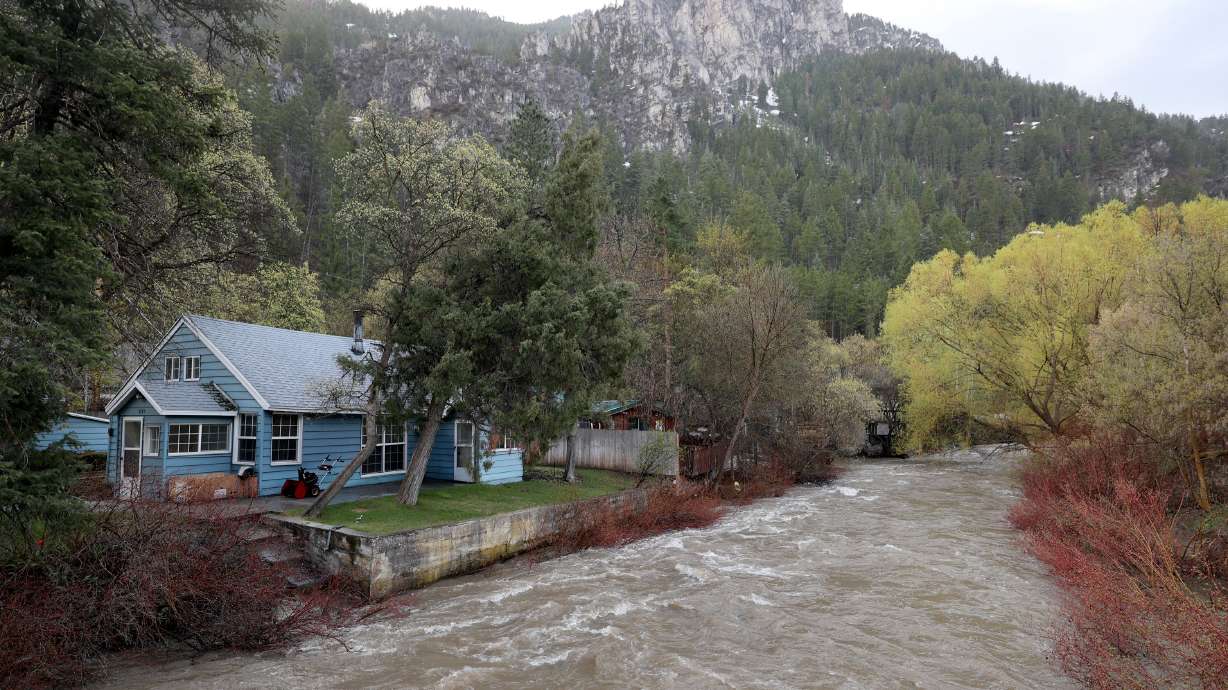Estimated read time: 4-5 minutes
This archived news story is available only for your personal, non-commercial use. Information in the story may be outdated or superseded by additional information. Reading or replaying the story in its archived form does not constitute a republication of the story.
SALT LAKE CITY — No parts of Utah are listed in severe drought for the first time in more than three years. However, state water officials are still calling on residents to use water efficiently as the summer nears.
The U.S. Drought Monitor released a report last week that finds about 63% of Utah remains either "abnormally dry" or worse, listing about one-fifth of the state in moderate drought. But the report did not list any severe drought for the first time since October 2019, a few months into the start of the current drought cycle Utah is close to shaking off.
"Right now, we've put a very big dent in (the drought)," said Glen Merrill, a National Weather Service hydrologist who appeared on KSL NewsRadio's "Dave and Dujanovic" Monday. "We're still holding onto moderate drought across 20% of the state but this is the time of the year where we can see significant improvements in drought status, especially after a large winter."
Getting out of severe drought
Utah's winter wasn't just large. Merrill called the state's record 30-inch snowpack "exceptional," helping bring down the severity of the drought that has impacted the area for years.
The current drought cycle began at the end of the summer of 2019, after what was another really good year for water.
"We had a very dry summer and a hot summer," Merrill said. "The combination of the heat and the lack of water over the summer months, which are typically dry, we saw that drought status creeping back up into severe ... by the end of the (year),"
The U.S. Drought Monitor began to list parts of southern Utah in moderate drought on Aug. 27, 2019. Some parts of the state, especially in southeast Utah, fell into severe drought on Oct. 8, 2019.
Nearly 43% of Utah had fallen into severe drought by the end of November that year before an average snow collection season fell over the ensuing winter, dropping the percentage back down to less than 2% by the spring of 2020. But the precipitation seemingly stopped after the winter, and severe, extreme and exceptional drought conditions emerged across the state during what was its driest calendar year on record.
We have to remember that drought is normal in the Great Basin and the Desert Southwest.
–Glen Merrill, hydrologist for National Weather Service
The severe drought continued into the start of the 2023 water year in October. The agency listed over 95% of the state in severe drought or worse at the time, including more than 50% in extreme drought. While the extreme drought ended in March, the U.S. Drought Monitor still listed about 5% of the state in severe drought in its May 2 report.
It dropped the status completely in its latest report issued Thursday.
While leaving severe drought is a major improvement after years of drought, Merrill warns it doesn't mean the state is out of the clear when it comes to future droughts. He points to 2019 as a percent example of how bad drought conditions can reappear months after a prolific winter.
"We have to remember that drought is normal in the Great Basin and the Desert Southwest," he said.
How to water more efficiently this year
Meanwhile, the drought update comes as temperatures are finally warming up to a point where the irrigation season is ready to begin in earnest. And the Utah Division of Water Resources has a new tool aimed at helping residents be more efficient with how they water their lawns.
It released a new "Low Water Use Guide" this week with recommendations on how many times someone should water their lawn if they have more water-efficient landscapes. It's an addition to its regular Weekly Lawn Watering Guide.

For example, the regular watering guide lists Washington County in three irrigations this week, while Grand and San Juan counties are in two irrigations. The new guide suggests those with low-water use lawns in those three counties should irrigate once this week, while all other areas with similar low-water use types don't need to irrigate at all.
The guide also outlines cycle recommendations for when people do irrigate their lawns.
Even though Utah's drought situation is much better this spring than the last two or three years, Shelby Ericksen, water conservation manager for the Utah Division of Water Resources, said she hopes people will use the guide and continue to consume water more efficiently.
"Utah will continue to be one of the driest states in the country and water conservation remains critical to our long-term sustainability," she said in a statement Monday. "The Weekly Lawn Watering Guide and Low Water Use Guide are essential tools for residents to make informed decisions about their lawn watering habits and ultimately help conserve our precious water resources."









